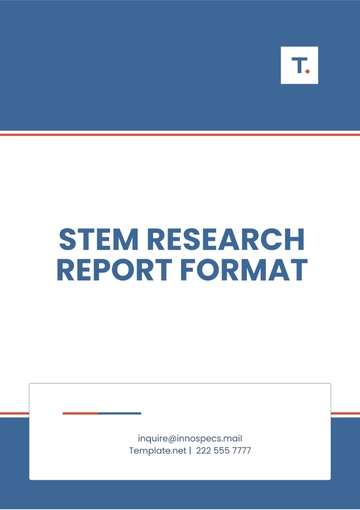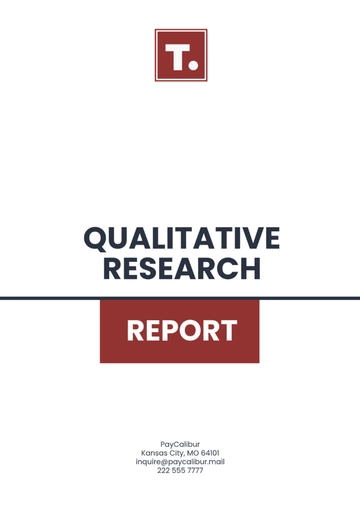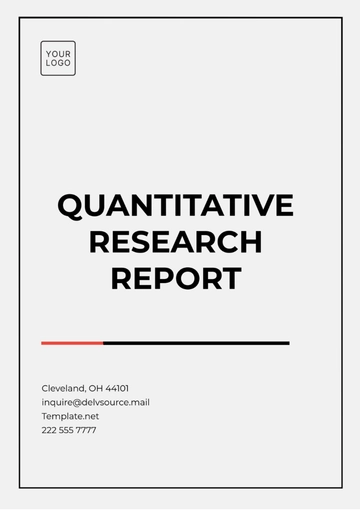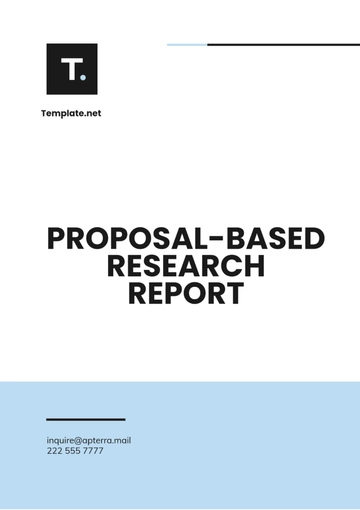Free Professional Research Activity Report

Date: [Date] |
Name: [Your Name] |
Company: [Your Company Name] |
Introduction
This report aims to deliver an in-depth account of the research conducted, providing a comprehensive analysis of methodologies, key findings, and areas explored. The objective is to ensure a thorough understanding of the subject by examining the topic from multiple perspectives and dimensions, contributing valuable insights into the broader field of study.
Methodologies
Research Design
The study employed a mixed-methods approach, integrating both qualitative and quantitative methodologies to capture a holistic view of the research topic. This combination enabled a nuanced exploration of the subject matter, leveraging diverse data sources to provide a robust understanding of the key variables and their relationships. The methodologies included surveys, in-depth interviews, and observational data, ensuring a well-rounded collection of insights.
Data Collection
Surveys: Structured questionnaires were disseminated to a carefully selected, random sample of participants, ensuring broad representation of diverse opinions, experiences, and demographic backgrounds. The survey aimed to capture a wide range of responses to understand public sentiment and general trends related to the study.
Interviews: Semi-structured, in-depth interviews were conducted with key stakeholders and subject-matter experts. These interviews provided qualitative insights, focusing on nuanced perspectives, personal experiences, and professional expertise to enrich the research findings.
Observational Data: Real-world observations were incorporated to capture spontaneous behaviors and interactions, offering insights that were not immediately accessible through surveys or interviews. This method enabled researchers to gather firsthand data on how the subject matter plays out in practical, everyday contexts.
Data Analysis
The analysis of the collected data employed advanced statistical tools and thematic analysis techniques. Quantitative data was subjected to rigorous descriptive and inferential statistical methods, ensuring the reliability and validity of the findings. Qualitative data, on the other hand, was meticulously coded and analyzed for emerging themes, patterns, and insights, providing deeper context and understanding.
Key Findings
Survey Results
The survey provided critical insights into the attitudes, perceptions, and satisfaction levels of the participants. Key findings, summarized in the table below, highlight significant areas of consensus:
Question | Percentage of Positive Responses |
|---|---|
Level of Satisfaction with Service | 75% |
Perception of Reliability | 80% |
Willingness to Recommend | 85% |
These results indicate a generally positive response, with respondents showing strong confidence in the reliability of the service and a high likelihood of recommending it to others.
Interview Insights
Interviews highlighted key improvement areas: better communication, more resources, innovation focus, and strategic planning for growth.
Observational Data
Field observations highlighted a gap between expected and actual performance, showing areas for improvement in customer interactions and engagement. These insights are crucial for refining operations and boosting user satisfaction.
Areas Explored
Communication Processes: The research examined organizational communication processes, highlighting strengths and weaknesses, and offered recommendations to enhance internal and external communication for clearer exchanges across all levels.
Resource Allocation: The study examined resource distribution efficiency across departments, revealing allocation disparities and analyzing strategies to optimize management, offering actionable insights for organizational improvement.
Innovation Practices: The research examined current innovation practices, identified barriers and enablers, and proposed frameworks to enhance strategies for long-term growth and competitive advantage.
Conclusion
In summary, this research thoroughly examines the subject using diverse methodologies, highlighting key areas like communication, resource allocation, and innovation for strategic organizational improvement. Ongoing research is advised to adapt to evolving challenges and opportunities, essential for long-term success.
- 100% Customizable, free editor
- Access 1 Million+ Templates, photo’s & graphics
- Download or share as a template
- Click and replace photos, graphics, text, backgrounds
- Resize, crop, AI write & more
- Access advanced editor
The Professional Research Activity Report Template, offered by Template.net, is the perfect tool for documenting and analyzing your research activities. This customizable template allows you to tailor the content to your specific needs. It's downloadable, printable, and fully editable in our AI Editor Tool, making it easy to update and adjust as needed. Enhance your research documentation process with this professional and versatile template today!
You may also like
- Sales Report
- Daily Report
- Project Report
- Business Report
- Weekly Report
- Incident Report
- Annual Report
- Report Layout
- Report Design
- Progress Report
- Marketing Report
- Company Report
- Monthly Report
- Audit Report
- Status Report
- School Report
- Reports Hr
- Management Report
- Project Status Report
- Handover Report
- Health And Safety Report
- Restaurant Report
- Construction Report
- Research Report
- Evaluation Report
- Investigation Report
- Employee Report
- Advertising Report
- Weekly Status Report
- Project Management Report
- Finance Report
- Service Report
- Technical Report
- Meeting Report
- Quarterly Report
- Inspection Report
- Medical Report
- Test Report
- Summary Report
- Inventory Report
- Valuation Report
- Operations Report
- Payroll Report
- Training Report
- Job Report
- Case Report
- Performance Report
- Board Report
- Internal Audit Report
- Student Report
- Monthly Management Report
- Small Business Report
- Accident Report
- Call Center Report
- Activity Report
- IT and Software Report
- Internship Report
- Visit Report
- Product Report
- Book Report
- Property Report
- Recruitment Report
- University Report
- Event Report
- SEO Report
- Conference Report
- Narrative Report
- Nursing Home Report
- Preschool Report
- Call Report
- Customer Report
- Employee Incident Report
- Accomplishment Report
- Social Media Report
- Work From Home Report
- Security Report
- Damage Report
- Quality Report
- Internal Report
- Nurse Report
- Real Estate Report
- Hotel Report
- Equipment Report
- Credit Report
- Field Report
- Non Profit Report
- Maintenance Report
- News Report
- Survey Report
- Executive Report
- Law Firm Report
- Advertising Agency Report
- Interior Design Report
- Travel Agency Report
- Stock Report
- Salon Report
- Bug Report
- Workplace Report
- Action Report
- Investor Report
- Cleaning Services Report
- Consulting Report
- Freelancer Report
- Site Visit Report
- Trip Report
- Classroom Observation Report
- Vehicle Report
- Final Report
- Software Report





























